Search results for: 'Stone'
-
 Egyptian heart scarab
Egyptian heart scarabBig beetle stone from the Late Period of Ancient Egypt. Scarabs of this kind have been placed next to the heart on mummies. Nice mint green fayence.
Price: on request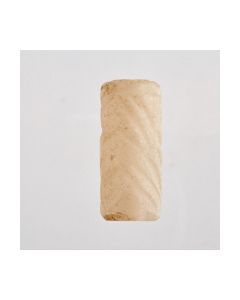 Mesopotamian cylinder seal with abstract scene
Mesopotamian cylinder seal with abstract sceneThe milky white stone is engraved with a scene that stands out by its high degree of abstraction. Late Uruk to Djemdet Nasr period, around 3000 BC.
Price: on request Scarab with pattern of circles
Scarab with pattern of circlesThe beetle stone bears a popular motive of the Middle Empire. A nice example of its kind. This scarab is described in the catalogue of Irène Gautier-Vodoz.
Price: on request Neolithic axe mounted for museum display
Neolithic axe mounted for museum displayThe stone tool is from the European Neolithic. A special feature is the museum-quality custom made shaft which gives a great impression of the tool's former mounting.
Price: on request Etruscan scarab with horses
Etruscan scarab with horsesGem stone and seal made of beautiful carnelian. It shows two horses in a frontal view in a highly stylized manner. From the famous Giorgio Sangiorgi collection.
Price: on request Large neolithic axe head
Large neolithic axe headA tool from the Early Neolithic of Europe. Nicely polished and impressive by its size and weight.
Price: on request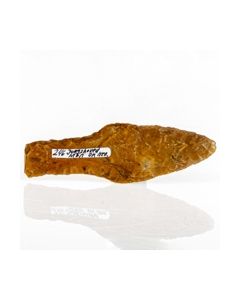 Scandinavian flint dagger
Scandinavian flint daggerNicely worked flint dagger from the transitional period between Late Neolithic and Early Bronze Age. Jungshoved on the Danish Island of Moen was the find spot.
Price: on request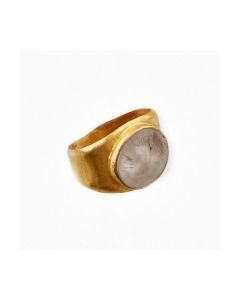 Roman gold ring with intaglio
Roman gold ring with intaglioA lovely piece of Roman jewellery in good condition. The chalcedony intaglio shows a portrait head. Dating to the 3rd century AD.
Price: on request Beaker of the Bell Beaker culture
Beaker of the Bell Beaker cultureThe voluminous body has the typical shape of vessels from the Bell Beaker culture. It has been made during the transitioning period between Stone Age and Bronze Age.
Price: on request Pyramidal stamp seal
Pyramidal stamp sealMade from beautiful light green stone during the early Iron Age. The seal is from northern Syria or southern Anatolia and bears an abstract depiction of a stag.
Price: on request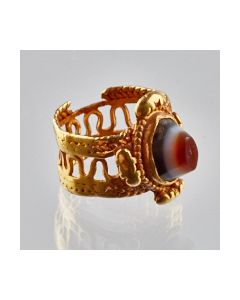 Skillful golden ring with insert agate
Skillful golden ring with insert agateThe fingerring dates to Late Roman times. It recalls the glory of the rich families of Rome. The elaborately ornamented ring holds an agate stone with beautiful coloured layers.
Price: on request Neolithic dagger
Neolithic daggerNicely worked flint dagger of type III. Sprove on the Danish Island of Moen was the find spot. 1700 to 1500 BC.
Price: on request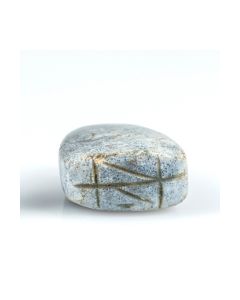 Near Eastern conoid stamp seal
Near Eastern conoid stamp sealColourful seal with geometrical decoration. Neo-Babylonian or Achaemenid, 6th to 5th cent. BC.
Price: on request Conoid stamp seal with spade of Marduk
Conoid stamp seal with spade of MardukThe stamp shows the spade of Marduk, patron deity of the city of Babylon. Above a crescent, symbolizing the moon god Sin. 7th to 6th century BC.
Price: on request Cone-shaped stamp seal with star of Ishtar
Cone-shaped stamp seal with star of IshtarThe seal depicts a tree of life with a rhomb and eight-pointed star, symbol of Ishtar. 7th to 6th century BC.
Price: on request Large greek alabaster Alabastron
Large greek alabaster AlabastronProbably Cypriot. Very large, impressive vessel in excellent condition. From the Swiss collection W. Rosenbaum (1894 - 1984).
€1,850 Polychromic Roman mosaic showing a fish
Polychromic Roman mosaic showing a fishMuseal erhaltenes Paneau, sehr intensive, leuchtende Farben. Herausragendes, ungewöhnlich gearbeitetes Stück.
Price: on request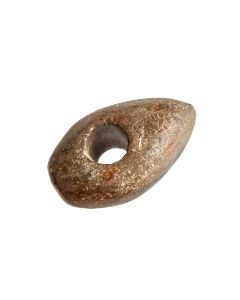 Small battle axe of the Single Grave culture
Small battle axe of the Single Grave cultureThe axe head from the younger Stone Age has a compact shape. Axes that have clearly been used as weapons are rare. Most axe types have probably served peaceful purposes.
Price: on request Old Babylonian cylinder seal
Old Babylonian cylinder sealThis Old Babylonian seal with a worship scene is made from lapis lazuli, a very rare choice for this period.
Price: on request Vessel of the Linear Pottery culture
Vessel of the Linear Pottery cultureThe beautifully decorated tableware or cookware was made by the earliest peasants of Central Europe, the Late Stone Age Linear Band Ware settlers. A find from Southern Germany in great condition.
Price: on request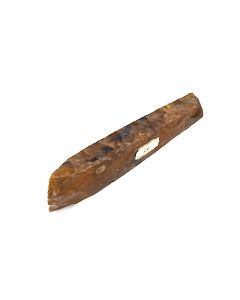 Neolithic axe head from Luetzow in Northern Germany
Neolithic axe head from Luetzow in Northern GermanyNice polished axe from brown flint. It was found more than 100 years ago near the town of Luetzow.
Price: on request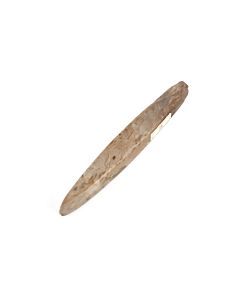 Neolithic chisel from Northern Germany
Neolithic chisel from Northern GermanyElegantly shaped chisel with two polished sides. Made of grey flint. Approx. 3400 to 2400 BC.
Price: on request Neo-Assyrian seal with mythological creature
Neo-Assyrian seal with mythological creatureThe octagonal stamp seal shows a hybrid creature and a priest. It originates from the Neo-Assyrian culture of the 8th to 7th cent. BC.
Price: on request Achaemenid stamp seal
Achaemenid stamp sealThis beautiful stamp seal is from the First Persian Empire of the Achaemenids or from parts under Greek control. 5th to 4th cent. BC.
Price: on request Early flat axe from Judea
Early flat axe from JudeaInteresting bronze axe head from Early Bronze Age. The piece was found in Judea.
Price: on request Early flat axe from Judea
Early flat axe from JudeaCompact bronze axe head from Early Bronze Age. The piece was found in Judea.
Price: on request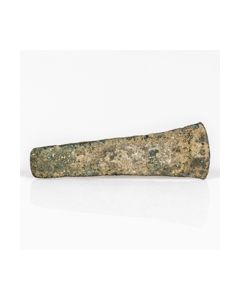 Early flat axe from Judea
Early flat axe from JudeaTrapezoidal axe head from Early Bronze Age. The piece was found in Judea.
Price: on request Two Mesopotamian mosaic cones
Two Mesopotamian mosaic conesThe pieces were part of a mosaic decoration of a Mesopotamian structure in the 4th Millenium BC. The temple architecture from Uruk is a particularly well known example of such a use.
Price: on request Roman facade decoration shaped as theatre mask
Roman facade decoration shaped as theatre maskImpressive and striking marble mask. It once adorned the upper facade of a villa or a public building during Roman Imperial times.
Price: on request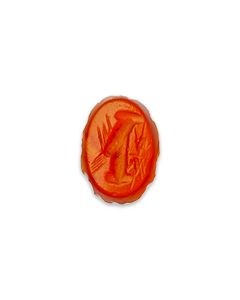 Roman intaglio with locust
Roman intaglio with locustThe gemstone made of red-orange carnelian shows a locust with two ears of corn.
€350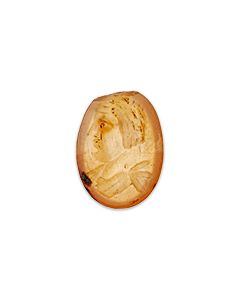 Roman intaglio with bust
Roman intaglio with bustThe gemstone made of yellow-orange carnelian shows a male portrait bust.
Price: on request Greek terracotta head of a woman
Greek terracotta head of a womanAbout 5th century B.C. From an old collection of a Frech engineer.
Price: on request Head of a woman with melon coiffure
Head of a woman with melon coiffureAbout 5th century B.C. From an old collection of a Frech engineer.
Price: on request Hellenistic female head with melon coiffure
Hellenistic female head with melon coiffureAbout 5th century B.C. From an old collection of a Frech engineer.
Price: on request Western Asiatic macehead
Western Asiatic maceheadHeavy head of a mace with a globular shape. Nicely polished stone. From the Early Bronze Age of Western Asia.
€670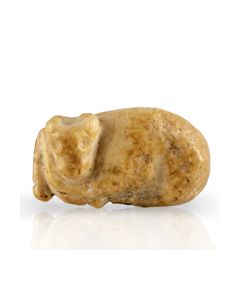 Mesopotamian stamp seal in bull shape
Mesopotamian stamp seal in bull shapeThe perfectly preserved seal is from the Jemdet Nasr period. The stamp shows two goats.
€2,800

